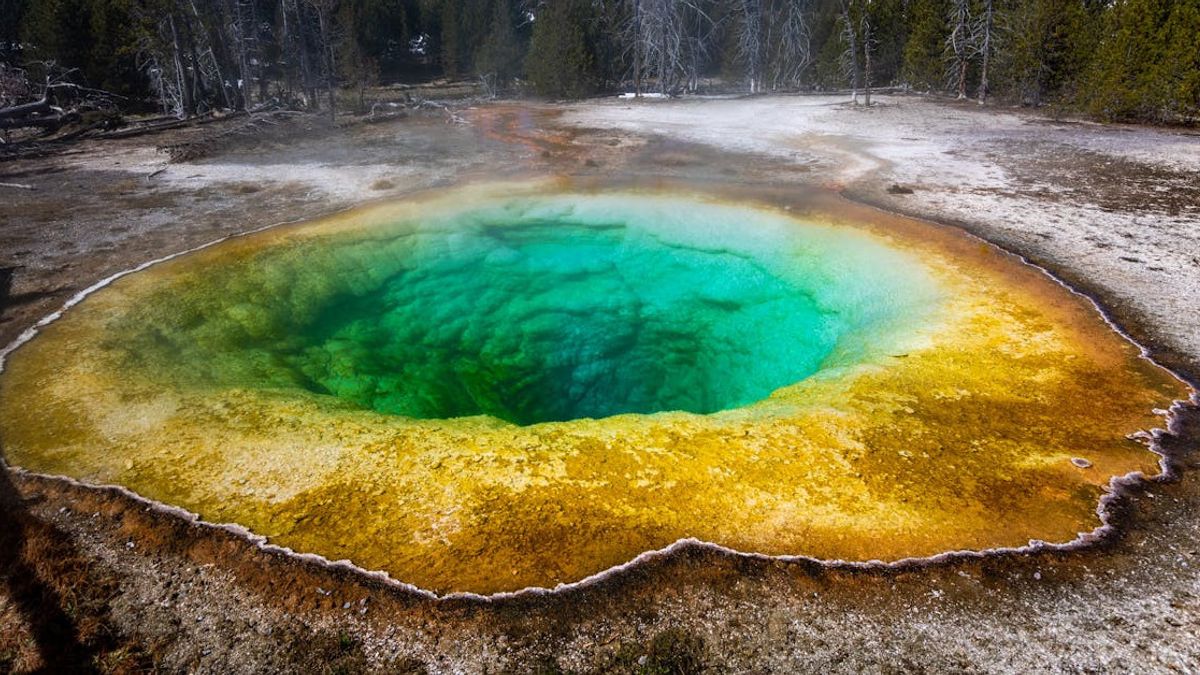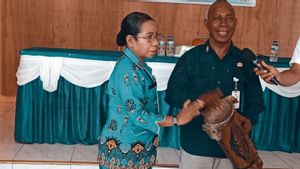JAKARTA - Scientists from Rutgers University have discovered a giant virus that is up to 1.5 billion years old in the geothermal springs of Yellowstone, USA. These viruses, which have a very large genome compared to ordinary viruses. This virus is harmless to humans, but can provide insight into conditions on Earth when single-cell organisms first formed.
These viruses are called 'giant' because they have very large genomes. Some consist of bacteria, while others include single-celled organisms similar to bacteria that require extreme environments to reproduce and eukariots, which are found in fungi. These findings challenge previous theories that claim that these viruses are newer because hot springs come and go over over time.
The researchers took samples from Lemonade Creek, an acid hot spring in Yellowstone that reaches a temperature of about 111 degrees Fahrenheit (43.8 celsius). They found that DNA contains an arbitraea sequence, a red alga (eukariot), and bacteria that host about 3,700 potential viruses. About two-thirds of them are giant viruses that are unknown to infect humans.
These viruses require extreme conditions such as temperatures above 200 degrees Fahrenheit (93 celsius), high pressure, or excessive salt concentration to reproduce. They believe this virus reproduces by infecting red alga in hot springs.
These findings suggest that these viruses have existed at least during cellular organisms. Dr. Bhattacharya of Rutgers University said that "connections between viruses and [hot springs] are ancient." The research team used computer analysis to narrow the official virus to 25 different types which they believe use red alga to reproduce.
The association likely started 1.5 billion years ago when the virus first evolved by borrowing genes from each other to adapt to heat and toxins such as arsenics found in hot springs.
Andreas Weber, a biochemist fromENCE Heine University D\"usseldorf, stated that the virus may play an important role in the long-term stability of the hot springs community. Mark Young, an environmental virologist from Montana State University, added that this finding supports the concept that viruses exist wherever cellular life exists and have existed at least during cellular life itself.
This study extends our understanding of the role of viruses in extreme evolution and ecology. This giant virus may have an important role in transferring genes from one organism to another, helping organisms survive under extreme conditions.
The discovery emphasizes the importance of protecting places like Yellowstone from allowing new scientific discoveries to shed more light on the history of life on Earth.
The English, Chinese, Japanese, Arabic, and French versions are automatically generated by the AI. So there may still be inaccuracies in translating, please always see Indonesian as our main language. (system supported by DigitalSiber.id)













